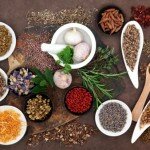Varicose Veins: Alleviate The Discomfort Of Swollen, Heavy Legs
Varicose veins are swollen, irregular shaped veins that often develop in the legs, particularly on the calves. As well as being painful, they can also make sufferers feel extremely self-conscious. The condition affects women more frequently than men and may even affect up to as many as 80 per cent of women over the age of 60! This is because the menopause and pregnancy increase your risk of varicose veins developing.
In a healthy person, blood normally flows from your feet towards your heart through the veins of your legs after it has nourished and oxygenated the tissues of your legs. These long veins are equipped with several one-way valves (small skin-folds), which stop your blood from flowing the wrong way (backwards), and help it to flow towards your heart instead. The muscles of your legs also help by squeezing your veins, pushing your blood in the right direction.
But with age, the valves and walls of your veins become thin and less elastic. This is due to destruction of the elastin and collagen content of your vein wall, two molecules that are damaged by free radicals (toxic by-products of your metabolism) and by glycosylation (dangerous attachment of sugar molecules to your proteins).
This weakens your veins, and the valves of your vein become unable to hold back your blood, allowing it to stagnate in your vein, which then becomes swollen and engorged. Sometimes, a small amount of blood may leak out of the varicose vein and deposit under the surrounding skin, causing discoloration, dryness and flakiness of the skin, a condition known as varicose eczema.
Varicose veins: Traumatic surgical procedures aren’t always successful
A popular conventional treatment for varicose veins is scleotherapy this involves injecting the vein with a chemical agent that causes scarring and blockage. This forces other healthy veins in the immediate area to take over the blood circulation. However, these injections can be extremely painful, may need to be repeated several times and are not always effective.
Alternatively, your doctor may suggest an operation to remove the entire affected vein, hoping that your blood will find its way up through other healthy veins within your leg. This is a traumatic operation and only used as a last resort.
Simple ways to prevent varicose veins from developing or getting worse
* Try and keep your legs elevated whenever possible; preferably higher than the rest of your body. This helps blood flow away from your legs, and prevents it from stagnating.
* Keep moving your feet and ankles, even when sitting (circle your ankles a few times in each direction and flex them backwards and forwards). This helps relieve the backlog of stagnating blood in your veins and will reduce the pressure within your vein. Dont sit with your legs crossed, as this restricts your circulation.
* Avoid high heels and tight stockings, as they make it more difficult for your blood to flow, and weaken the walls of your veins. Wear special elastic support stockings instead, which help ease symptoms like aching legs.
* Loose any excess weight to lessen the pressure on the walls of your vein.
Study after study confirms the effectiveness of horse chestnut for alleviating varicose veins
One of the most rigorously studied herbal treatments for varicose veins is horse chestnut. A recent review of all the available evidence has confirmed its benefits in this area and led researchers to claim that it is one of the most effective treatments for varicose veins alongside compression stockings, sclerotherapy and laser surgery.
In a series of five studies, Swiss scientists found that horse chestnut extract taken in both tablet form (20mg to 50mg) or applied directly on the skin in gel form, was able to reduce swelling of the ankles and lower legs, alleviate leg pain and heaviness, and improve itchiness.
Commenting on the findings the researchers said: safe, well tolerated, and acceptable to patients, and a real alternative in the treatment of patients with mild to moderate varicose veins.
The recommended dosage for horse chestnut is 300mg tablet taken twice daily. This should provide 50mg of the purified active ingredient each time. However, in the studies cited, scientists used dosage amounts that contained as little as 20mg of the active ingredient; so you can take a smaller amount and still get beneficial results. Horse chestnut can also be used as a cream or gel, applied directly to the affected area three times a day.
This powerful duo helps maintain the health of your veins
Aloe vera and tea tree oil can be used together to successfully help combat varicose veins. Research has revealed that they help control inflammation, swelling, redness and discomfort in cases of mild to moderate varicose veins
The recommended dosage for aloe vera is 50mg to 200mg a day in capsule form. Tea tree oil is used directly on the affected skin, three to four times a day.
Pycnogenol strengthens your veins and helps protect them from harmful toxins
Studies conducted by German scientists from the Institute Pharmaceutical Chemistry, University of Munster, have revealed that pycnogenol (an extract of the bark of the maritime pine) has several benefits with regards to promoting healthy veins.
For example, it is a powerful antioxidant that helps protect your veins from harmful toxins and free radicals. It also helps increase the concentration of other antioxidants in your blood, such as vitamins C and E, which have the same effect.
In addition, pycnogenol helps maintain vein strength and elasticity by regulating several enzymes and other substances, such as nitric oxide and angiotensin, which help prevent abnormal narrowing or excessive widening of your veins. The recommended dosage is 50mg taken once or twice a day.
Other supplements that have been found to improve the elasticity of the veins include coenzyme Q10 (30mg taken three times a day); vitamin C (1g a day); and methyl sulphonyl methane, also known as MSM (1,000mg taken twice a day).
Did you find this information useful?
Then why not get more expert health recommendations just like this delivered direct to your inbox?
"It is truly refreshing to read a newsletter on the topic of alternative medicine which is scientifically based and reviewed by professionals..." - Robert Sinott
We respect your privacy and will never share your details with anyone else.Bear in mind all the material in this email alert is provided for information purposes only. We are not addressing anyone’s personal situation. Please consult with your own physician before acting on any recommendations contained herein.
Sources:
Curr Treat Options Cardiovasc Med. 2007 Apr;9(2):115-26
J. Adv Ther. 2006;23(1):179-90
Am J Clin Dermatol. 2002;3(5):341-8
Int J Clin Pharmacol Ther. 2002;40(4):158-68
Med Hypotheses. 2005;64(2):279-83
- Comments (6)
- Facebook Comments (0)
Comments are closed.











Hi i am 25 and i have also huge swollen variocose along my leg.I very afraid doctors.what is the best medicine on this problem?
I am 38 and have a huge swollen varicose vein which is above my knee and goes across my leg diagonally and throbs and aches, is this dangerous
Hi, I am 35 and I had a Vericous vains Op 2 days agoe. I am recovering very well wid enough bed rest.tanx..
iam 35 and have a varicose vain you dont expect them at my age. my legs are really aching i take prozac is it safe to take horse chesnut?
Hello
After reading this article I have realized that same problem with my foot which becomes swollen frequently if not kept elevated. But as written in the article this is supposed to occur at an age group of 60, I am surprised that I am just 28, is this an exception and do let me know the best possible cure for this.
Thanks
That’s the info I wan’t is about varicose
veins nothing else. Im only 38.